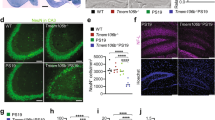Abstract
We have examined the degradation of amyloid precursor protein (APP) in the brain cortex of adult (24±2) and old (58±2) mice at different post-mortem time intervals (0, 1.5, 3, 6, 12 and 24 h). The brain cortex extract was prepared and processed for immunoblotting using antibodies against N-terminal 47–62 amino acids (Asp29) and central 301–316 amino acids containing Kunitz protease inhibitor (KPI) domain (Asp45) of APP. Asp29 (N-terminal) recognizes two bands of 140 and 112 kDa. The amount of 140 kDa is relatively higher in adult than old. The level of 112 kDa is 1.6 times lower in adult than old. It shows no remarkable change with varying post-mortem time. On the other hand, Asp45 (KPI) detects two bands of 110 and 116 kDa. While 116 kDa disappears rapidly after death of the animal, 110 kDa shows no remarkable change with different post-mortem periods. Further incubation of the disrupted tissue at 4 °C for 24 h and immunoblot analysis with Asp29 (N-terminal) shows 112 kDa in both ages but 58.5 kDa in adult and 70 kDa in old only. Analysis with Asp45 (KPI) shows only 54 kDa which increases after 3 h in adult but decreases significantly after 1.5 h and becomes undetectable at 24 h in old. Thus the present findings indicate that APP is degraded in a precise pattern and it depends on cellular intactness, post-mortem period and age of the animal.
Similar content being viewed by others
References
Weidemann A, Konig G, Bunke D, Fischer P, Salbaum JM, Masters CL & Beyreuther K (1989) Cell 57: 115–126
Golde TE, Estus S, Usiak M, Younkin LH & Younkin SG (1990) Neuron 4: 253–267
Beyreuther K, Bush IA, Dyrks T, Hilbich C, Koniz G, Monning U, Multhaup G, Brior R, Rumble B, Schubert W, Small DH, Weidemann A & Masters CL (1991) Annals New York Academy Science 640: 129–139
Whitson J, Selkoe DJ & Cotman CW(1989) Science 243: 65–68
Mattson MP, Cheng B, Culwell AR, Esch FS, Liederburg T & Rydel RE (1993) Neuron 11: 243–254
Breen KC, Bruce M & Anderton BH (1991) J. Neurosci. Res. 28: 90–100
Schellenberg G (1994) Neurobiol. Aging 15: 141–144
Hanks SD & Flood DG (1991) Brain Res. 540: 63–82
Kang J & Muller-Hill B (1990) Biochem. Biophys. Res. Commun. 166: 1192–1200
Anderson JP, Chen T, Kin KS & Robakis NK (1992) J. Neurochem. 59: 2328–2331
Seubert P, Oltersdorf T, Lee MG, Barbour R, Blomquist C, Davis DL, Bryant K, Fritz LC, Galarko D, Thal LJ, Liederburg T & Schenk DB (1993) Nature 361: 260–263
Robakis NK (1994) In: Alzheimer disease (Terry RD, Katzman R & Bick KL, eds Ravan Press Ltd., New York), pp 314–326
Iizuka T, Shoji M & Kawarabayashi T, Sato S, Kobayashi T, Tada N, Kasai K, Matsubara E, Watanabe M, Tomidokoro Y & Hirai S (1996) Biochem. Biophys. Res. Commun., 218: 238–242
deDuve C, Pressman BC, Gianetti R, Wattiaux R & Appelman F (1955) Biochem. J. 60: 604–617
Cole GM, Bell L, Truong Q & Saitoh T (1992) Ann. NY Acad. Sci. 674: 103–117
Sambamurthi K, Refolo LM, Shioi J, Papolla PA & Robakis NK (1992) Ann. NY Acad. Sci. 674: 118–128
Cataldo AM, Hamilton DJ & Nixon RA (1994) Brain Res. 640: 68–80
Estus S, Golde TE & Younkin SG (1992) Ann. NY Acad. Sci. 674: 138–148
Haass C, Hung AY, Scholssmacher MG, Teplow DB & Selkoe DJ (1993) J. Biol. Chem. 268: 3021–3024
Siman R, Mistretta B, Durkin JT, Savage MJ, Loh T, Trusko S & Scott RW (1993) J. Biol. Chem. 268: 16602–16609
Shoji M, Golde TE, Ghiso J, Cheung T, Estus S, Shaffer LM, Oai XD, Tintner R & Fragione B (1992) Science 258: 126–129
Haass C & Selkoe DJ (1993) Cell 75: 1039–1042
Koo EH & Squazzo SL (1994) J. Biol. Chem. 269: 17386–17389
Buscaglio J, Gabuzda DH, Matsudaira P & Yankner BA (1993) Proc. Natl. Acad. Sci. USA 90: 2090–2096
Ladror US, Snyder SW, Wand TW, Holzman TF & Krafft GA (1994) J. Biol. Chem. 269: 18422–18428
Shi GP, Webb AC, Foster KE, Knoll JHM, Lemere CA, Munger JS & Chapman HJ (1994) J. Biol. Chem. 269: 11530–11536
Caporaso GL, Gandy SE, Buxbaum JD & Greengard P (1992) Proc. Natl. Acad. Sci. USA 89: 2252–2256
Neve RL, Kammoscheidt A & Hohmann LF (1992) Proc. Natl Acad. Sci. USA 89: 3448–3452
Cataldo AM, Barnett JL, Berman SA, Li J, Quariess S, Bursztajn S, Lipps C & Nixon RA (1995) Neuron 14:671–680
Neill D, Hughes D, Edwardson JA, Rima BK & Allsop D (1994) J. Neurosci. Res. 39: 482–493
Asaithambi A, Mukherjee S & Thakur MK (1997) Biochem. Biophys. Res. Commn. 231: 683–685
Bradford MM (1976) Anal. Biochem. 72: 248–254
Laemmli UK (1970) Nature 227: 680–685
Ausubel F, Brant R, Kinston RE, Moore DD, Scidman JG, Smith JA & Struhl K (1995) In: Short Protocols in Molecular Biology, John Wiley and Sons, Inc. USA
Bruning JL & Kintz BL (1977) Computational handbook of statistics, Scott, Foreman and Company, England
Anderson JP, Esch FS, Keim PS, Sambamurti K, Lieberburg I & Robakis NK (1991) Neurosci. Lett 128: 126–128
Hardy J & Higgins GA (1992) Science 256: 184–185
Potempska A, Styles J, Mehta P, Kim KS & Miller DI (1991) Mol. Biol. Rep. 13: 221–224
Author information
Authors and Affiliations
Rights and permissions
About this article
Cite this article
Asaithambi, A., Mukherjee, S. & Thakur, M.K. Age-dependent degradation of amyloid precursor protein in the post-mortem mouse brain cortex. Mol Biol Rep 26, 179–184 (1999). https://doi.org/10.1023/A:1007045806861
Issue Date:
DOI: https://doi.org/10.1023/A:1007045806861




